Continue reading for our analysis...
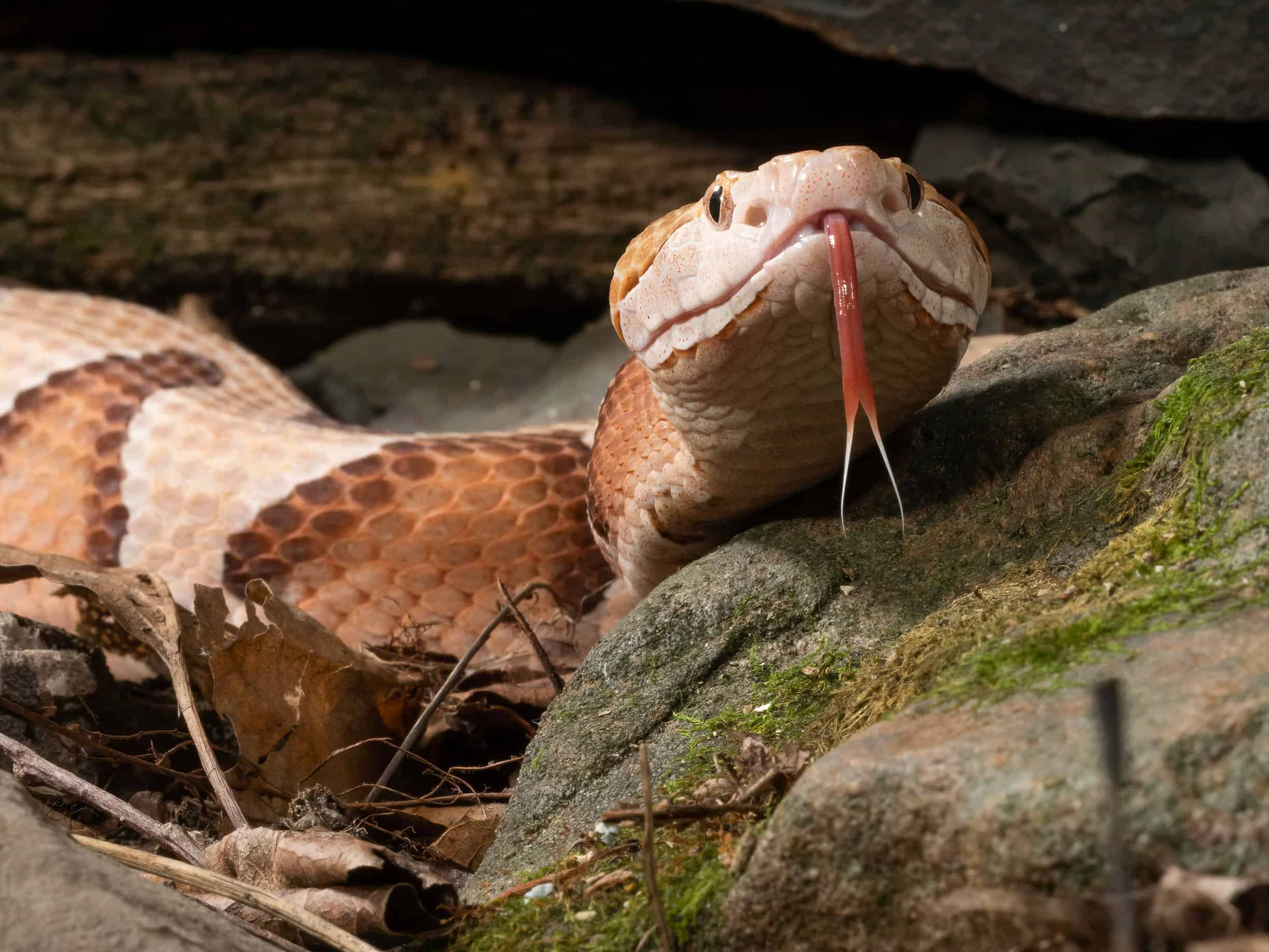
The copperhead snake is responsible for about 3,000 snake bites in the United States per year. They can be found throughout most of the eastern seaboard, as far north as Massachusetts and west to Texas. It is most common in deciduous forests and near swampy areas. They are not aggressive, but very common.
These snakes are highly defensive and if they bite, bite repeatedly. Most of us would prefer to keep away from them. But when this beautiful copperhead was found in the middle of a road it resulted in an incredible filming opportunity, and we get to share it!
The lovely creature was found out in the open on a sandy road. They are a highly adaptable species that can live in various habitats, including near human settlements and even construction sites! They are found in many areas of the U.S. including Massachusetts, Illinois, Texas, and Ohio. This is a young southern copperhead, and the scientific name is Agkistrodon contortrix. They are found in eastern Texas and eastern Oklahoma but also in Nebraska, Illinois, Ohio, Pennsylvania, Connecticut, Massachusetts, and New York.
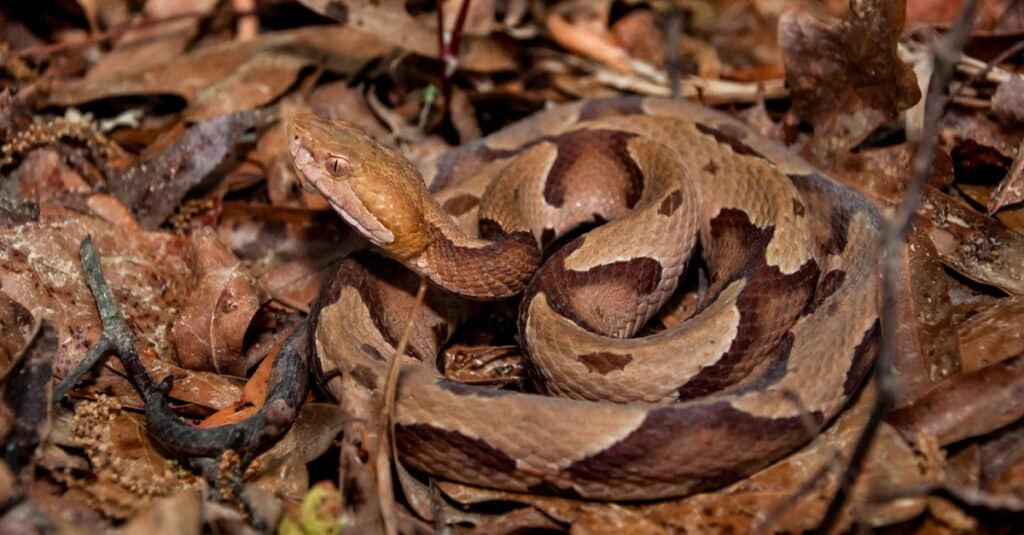
Copperheads have excellent natural camouflage.
©Jay Ondreicka/Shutterstock.com
In this footage, we are treated to a close-up view of the copper-colored head and pink body with dark hourglass bands. The tip of the tail is yellow and is used as a lure to attract lizards, frogs, and other prey. These are not huge snakes, with the largest ones around four feet long. We know that this is a young animal because of its small size.
Copperheads have been described as “ambush predators”. This means that they sit and wait – until some unsuspecting prey stumbles past, then strike with amazing speed. They feed on insects, other invertebrates, small mammals, and birds. Once they have plunged their fangs into the prey and released their venom, they either hold the victim in their mouth as it dies, or the copperhead follows it and waits for it to become immobile. Then, they eat their meal whole by fully opening their hinged jaws. These guys only need to eat around once a month!
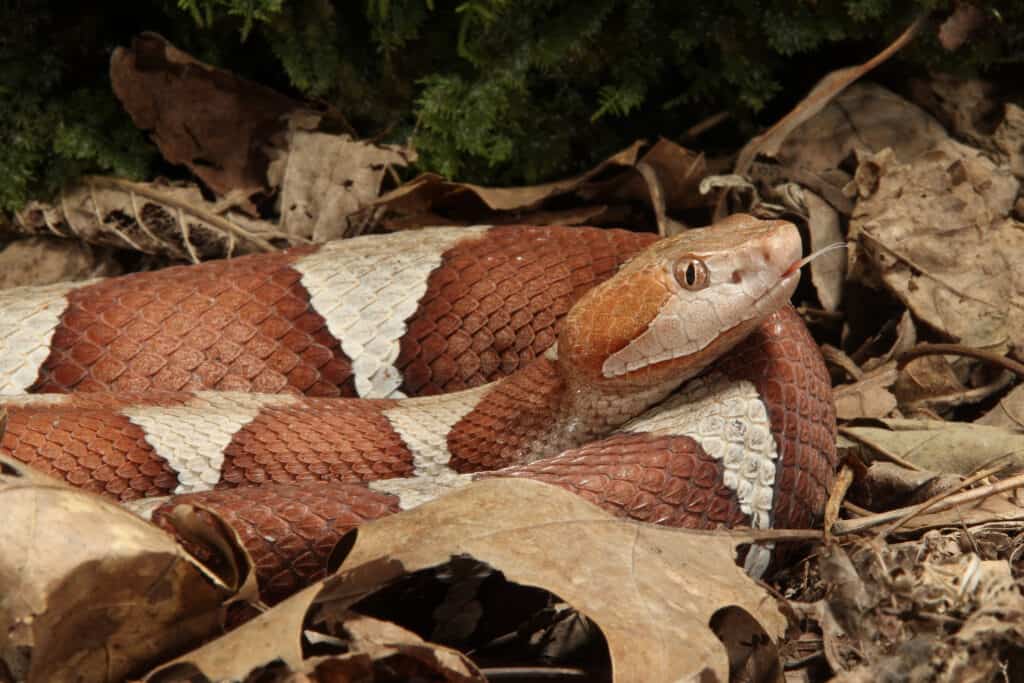
Copperheads are “ambush predators,” meaning they lie in wait to attack unsuspecting prey.
©Dennis W Donohue/Shutterstock.com
The strike is an integral part of how they hunt, and they are very good at it! The copperhead snake in this video strikes a total of 12 times, so we get to view it in detail. It starts from an elongated position and the strike is so powerful that the whole body is lifted off the ground. It lands in the classic viper-coiled position from which it launches the other strikes. They are very impressive in real time but once the footage is slowed down you can really appreciate the power and the accuracy of the strike. The head is extended forward with explosive speed, it is no wonder that it is such an efficient hunting mechanism.
Having provided us with such a magnificent display of its hunting prowess, this particular copperhead is gently moved from the road and to a safe location amongst the trees where it can get on with its day!
Are Copperheads Usually This Touchy?
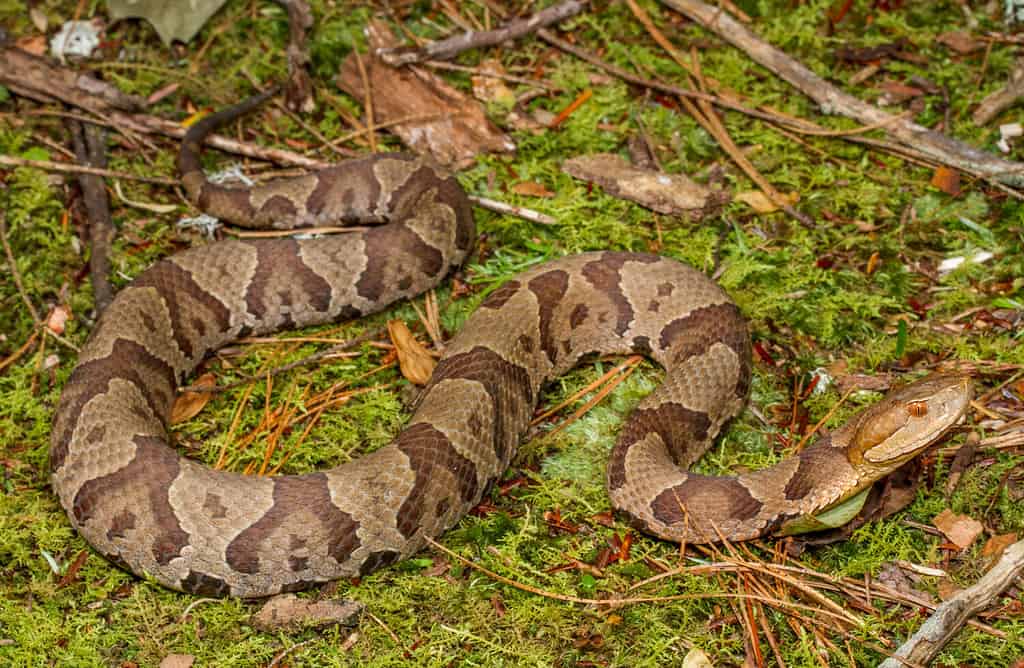
Texas Brown Snake (
Storeria dekayi texana) has seven recognized subspecies.
©JacobLoyacano/Shutterstock.com
Copperheads are generally non-aggressive, but they exhibit territorial behavior and will resort to striking in self-defense when they perceive a threat. When encountering a copperhead, it is advisable to maintain a safe distance and refrain from disturbing or engaging with it.
Copperheads are ambush predators and generally lie in wait and then strike fast. While they are more likely to bite than other snakes, they will generally leave you alone if you leave them alone. They don’t usually continue to bite unless they feel threatened. The maker of this video was provoking the snake so that he could film the strike. Definitely, not something you would want to do!
Common Ambush Predators
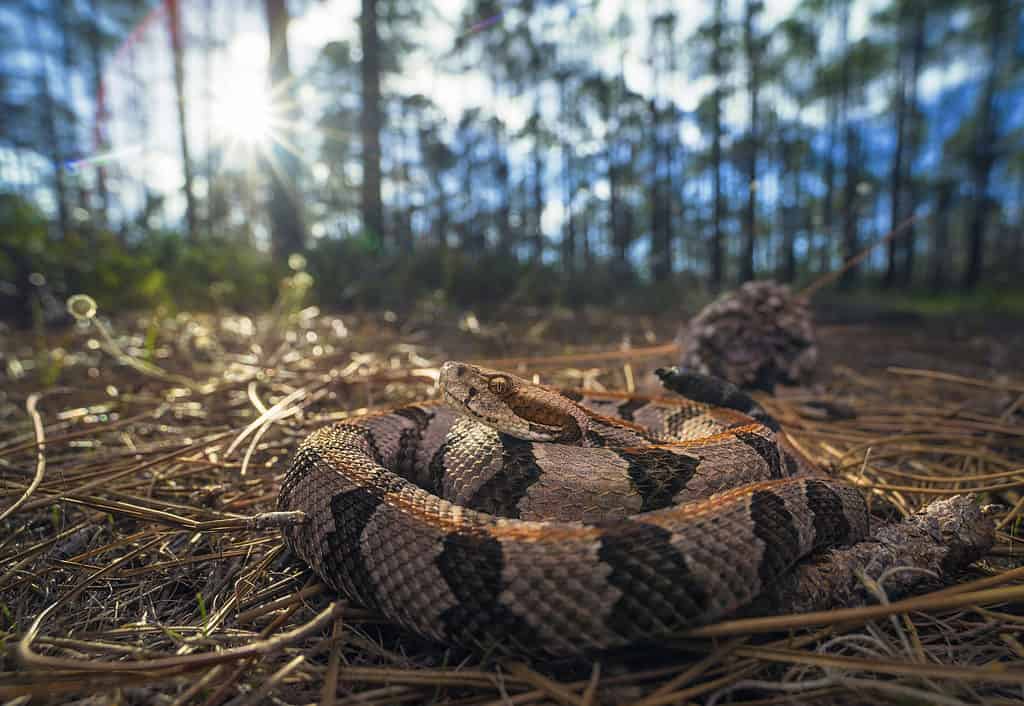
Most snakes are ambush predators, including venomous rattlesnakes.
©Kristian Bell/Shutterstock.com
Ambush predators use stealth, luring techniques, camouflage, mimicry, and other strategies to capture or attack prey. They typically remain concealed and patiently wait for the opportune moment to strike. While we’ve shown that copperhead snakes are very aggressive ambush predators, other animals make the cut as well. Here’s a list of some other ambush predators native to the United States:
- Polar Bear
- Mountain Lion
- Trapdoor Spider
- American Alligator
- Chameleon
- Alligator Snapping Turtle
- American Bullfrog
- Rattlesnake
- Praying Mantis
Discover the "Monster" Snake 5X Bigger than an Anaconda
Every day A-Z Animals sends out some of the most incredible facts in the world from our free newsletter. Want to discover the 10 most beautiful snakes in the world, a "snake island" where you're never more than 3 feet from danger, or a "monster" snake 5X larger than an anaconda? Then sign up right now and you'll start receiving our daily newsletter absolutely free.
Thank you for reading! Have some feedback for us? Contact the AZ Animals editorial team.







